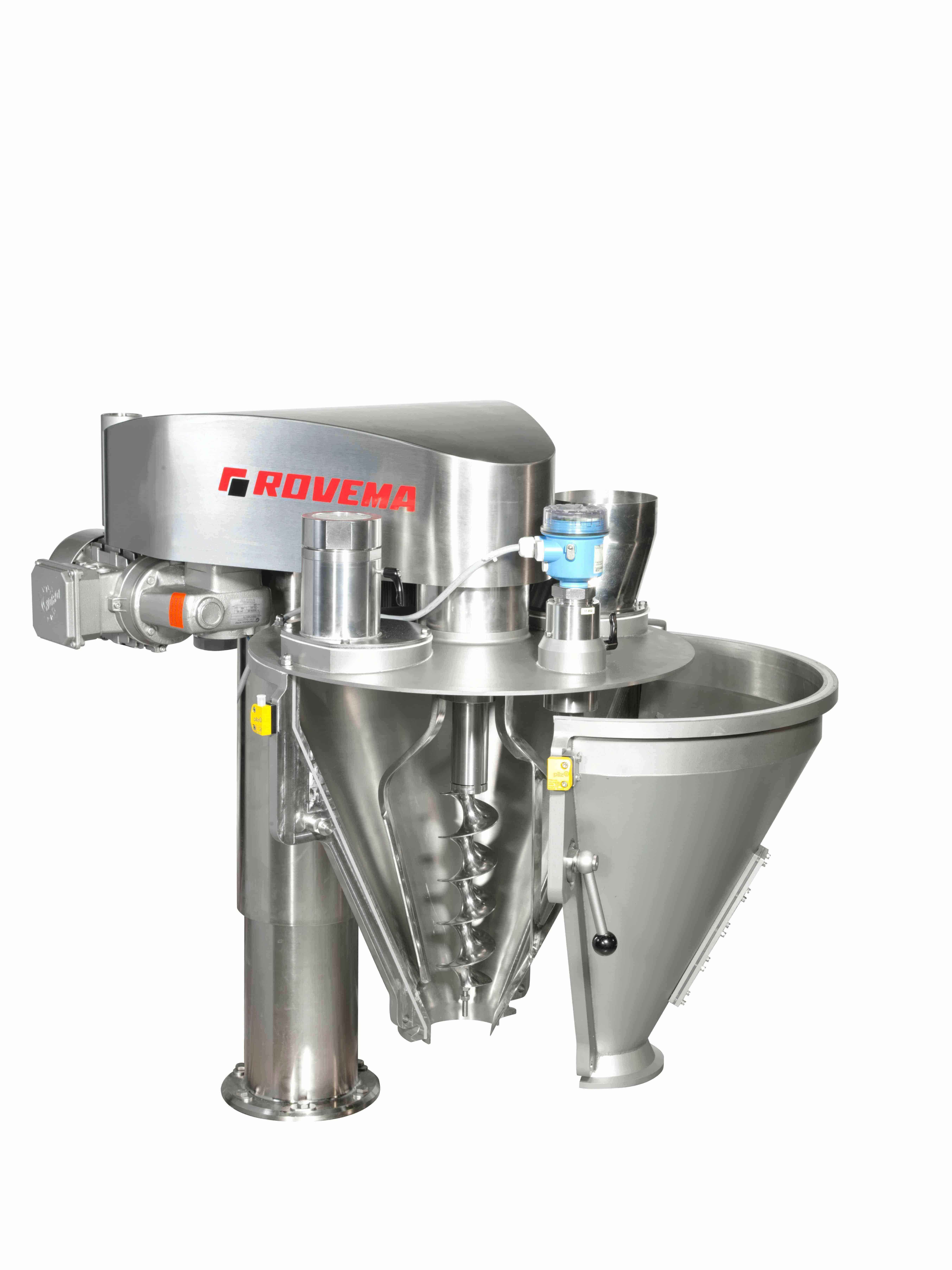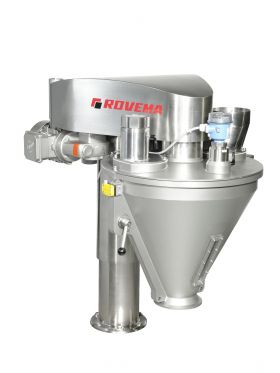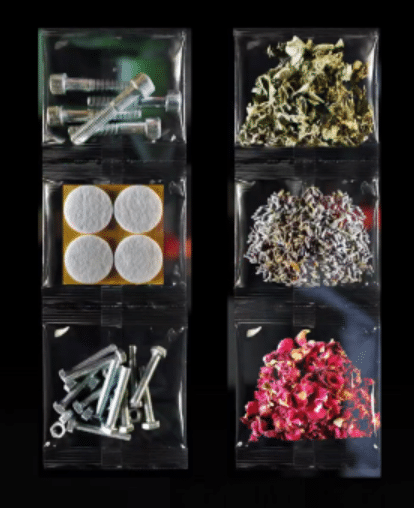3 Cutoff Options For an Auger Filler
Once you have established that an auger filler is the proper method for filling your powder products, you then need to consider what type of...
2 min read
 Emily Brogan
:
Fri, May 9, 2025
Emily Brogan
:
Fri, May 9, 2025


When packaging powders or granular products, precision matters, especially when it comes to consistent fill weight. And if you’re using an auger filler, small inconsistencies can quickly add up to big problems: product giveaway, rejected bags, and unexpected downtime.
At Rovema, we believe the best packaging results come from equipment that performs reliably and predictably, day in and day out. If your auger filler is delivering inconsistent fill weights, the root cause is likely related to two critical factors: head pressure and bulk density.
Here’s what you need to know to optimize your auger filler for better performance and overall equipment effectiveness (OEE).
Bulk density is simply the weight of a product per unit of volume. It may sound basic, but even small variations in product settling or flow can have a major impact on your auger’s fill consistency.
Think of it this way: if you scoop a cup of flour from a bag and weigh it, then tap that cup on a table and fill the extra space with more flour, the second cup weighs more, even though the volume hasn’t changed. The same thing happens inside your auger hopper when product isn’t evenly fed.
When bulk density changes during production, the amount of product captured between the auger flights fluctuates, causing overfills or shortfills, and inconsistent weight control downstream.
By far, one of the best methods in maintaining consistent head pressure in the hopper is to use a horizontal infeed screw. This method ensures the hopper maintains a uniform and controlled fill level required to achieve consistent head pressure in the hopper. The fill level is controlled from a level sensor in the auger hopper. When the fill level dips below the designated low limit, the feed screw turns on and fills the hopper as needed to maintain a consistent level.
When your auger hopper doesn’t have consistent fill levels this will result in varying head pressures in the auger bowl. The auger tooling flights will then fill a different amount of product due to the changes in bulk density, causing your bags to be short-filled or over-filled.
This wide variation with your weight control may lead to packages that don’t meet quality assurance and require more attention from the operator.
Since the auger tooling is what actually feeds the product into the bag, it needs to deliver the same amount of product to the bag every time. As the volume of space between the auger flights is always the same, consistent bulk density plays an important role during the filling process.
The optimum rotation of the auger is about three to four turns to fill a bag. Keeping the fills in this window will maximize speed of filling the stand up pouch or pillow bag and provide accurate weight control. Auger tooling is an important factor in this area. If your auger is only rotating one to two times per bag and your weight control is off, your tooling may be too large for the application.
The agitator is designed for specific product applications such as non-free flowing powders. Determining the angle of repose and the bench test are two methods you can use to deduce if a product is free flowing or non-free flowing.
Inside the auger hopper the agitator guides and pushes the product to the flights of the auger screw. It keeps the product from tunneling. You will want to make sure your agitator rotation is set for a speed that works with your product to achieve accurate fill weights.
Agitator rotation speeds are user settable for optimal product performance.
Why is this information valuable? Because filling bags properly each and every time can be achieved through an understanding of the factors that affect auger speed, fill weight and hopper capacity. In the end, all of us are trying to achieve optimal OEE and efficient packaging of our products.
If you have any questions about your auger filler, head pressure, and fill weight you can contact us by clicking the link below.


Once you have established that an auger filler is the proper method for filling your powder products, you then need to consider what type of...

In the world of packaging machinery, it may seem odd to refer to a diverse range of products like baking mixes, ground coffee, spices, and powdered...

Since the debut of ROVEMA’s new Collect, Buffer, Fill system at PACK Expo in 2021, many questions, product ideas, and scenarios have been brought to...